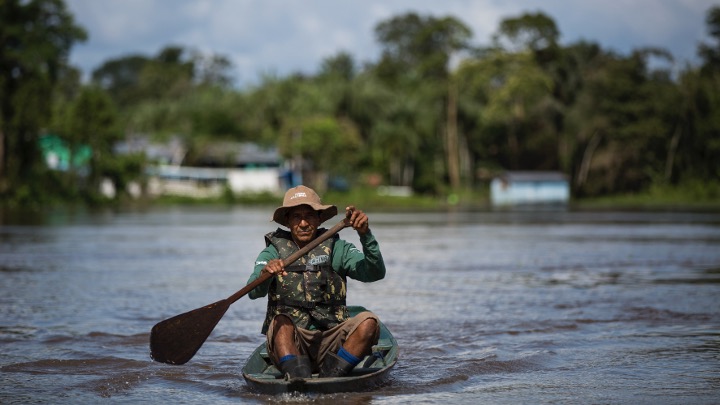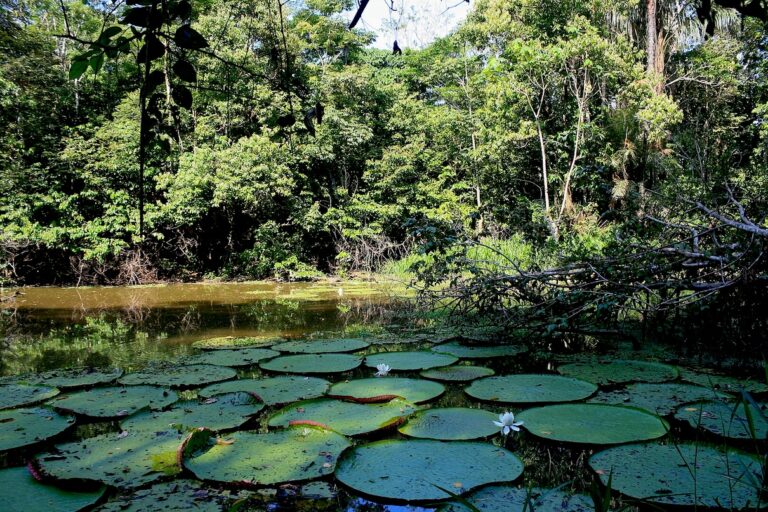- When communities are equipped with training, resources and institutional support, they can become powerful guardians of biodiversity, the lead author of a new study writes.
- His team’s research showed that community-led patrols reduced illegal activities such as unregulated fishing, hunting and logging by up to 80% in two vast protected areas in the Brazilian Amazon, even in the near-total absence of formal government enforcement.
- “The implications of the study stretch beyond the Amazon. As funding and political support for environmental enforcement dwindle in many tropical countries, decentralized and community-driven strategies offer a practical path forward,” he argues.
- This post is a commentary. The views expressed are those of the author, not necessarily of Mongabay.
In the heart of the Brazilian Amazon, local communities are leading the charge against environmental crime — and they’re succeeding. Our new peer-reviewed study published in Conservation Biology has found that community-led patrols reduced illegal activities such as unregulated fishing, hunting and logging by up to 80% in two vast protected areas, even in the near-total absence of formal government enforcement.
These findings come from a decade-long analysis of the Voluntary Environmental Agents (VEA) Program, a community-based monitoring initiative in the Mamirauá and Amanã sustainable development reserves in Brazil’s Amazonas state. From 2003 to 2013, more than 200 trained residents carried out nearly 20,000 patrols, totaling around 150,000 hours of activity.
When communities are equipped with training, resources and institutional support, they can become powerful guardians of biodiversity. Local participation in environmental protection offers a scalable and cost-effective approach that not only enhances rule enforcement but also strengthens social legitimacy and long-term compliance — especially in remote or underresourced regions.

Patrolling with purpose
The study tracked illegal activities across 12 community-managed territories within the two reserves. VEAs, often mobilized through community alerts, responded to environmental infractions including poaching of pirarucu (Arapaima gigas), the world’s largest scaled freshwater fish, and the use of banned fishing gear.
Crime detection was higher during informant-led patrols and increased with the number of patrollers and time spent in the field. But what stood out was the overall downward trend: environmental violations fell sharply over time in nearly all territories — a testament to both the deterrence effect of patrols and growing local adherence to conservation rules.
Meanwhile, data from government-led operations outside the reserves, involving larger teams and greater resources, showed no similar decline in crime rates.
More than monitoring
The VEA Program goes beyond surveillance by weaving together environmental education, local leadership development and community organizing. By working within existing governance structures and respecting traditional knowledge, the program has strengthened not only enforcement, but also community ownership of conservation efforts.
Local residents are not merely enforcing externally imposed rules, they are actively participating in shaping and legitimizing them. This form of engagement fosters long-term compliance by aligning conservation practices with community values and priorities, offering a more sustainable alternative to top-down enforcement approaches.
The initiative is legally recognized by the Brazilian government and supported by local NGOs, including the Mamirauá Institute where I work. Still, it operates on a shoestring budget, as most agents are unpaid, relying on logistical support for fuel, training and coordination.

A model for the tropics?
The implications of the study stretch beyond the Amazon. As funding and political support for environmental enforcement dwindle in many tropical countries, decentralized and community-driven strategies offer a practical path forward.
Such programs should not be viewed as substitutes for state responsibility. Their effectiveness depends on sustained government support, legal recognition and strong institutional partnerships. Community engagement can amplify conservation outcomes, but it must be backed by resources, formal mandates and a supportive policy framework to be truly enduring.
The researchers urge policymakers to see community-based patrolling as a vital component of conservation, not an informal stopgap. With growing global momentum for rights-based and inclusive approaches to protected area management, the lessons from Mamirauá and Amanã offer a hopeful, evidence-based blueprint.
These communities have transformed environmental stewardship into a long-term conservation strategy. Their efforts are not only addressing immediate threats but are also laying the foundation for the protection of forests and natural resources for future generations.
Caetano Franco is an environmental social scientist specializing in community-based conservation, participatory governance and natural resource management in the Amazon.
Related audio from Mongabay’s podcast: Go inside a ‘venture capital fund for community conservation,’ listen here:
See related content:
Organized crime & gold trade are increasingly connected, report shows
Community patrolling reduces crime numbers in the Amazon, study shows
Citation:
Franco, C. L. B., Morcatty, T. Q., Queiroz, H. L., Sorice, M. G., Fa, J. E., Souza, P. R., … El Bizri, H. R. (2025). Strengthening Amazon conservation through community‐based voluntary patrolling. Conservation Biology, 39(3). doi:10.1111/cobi.70045






